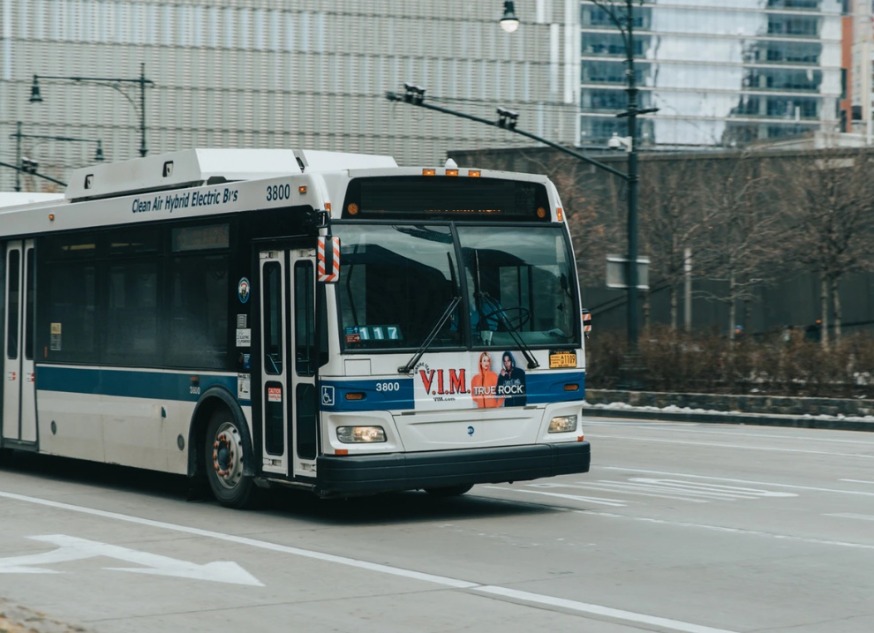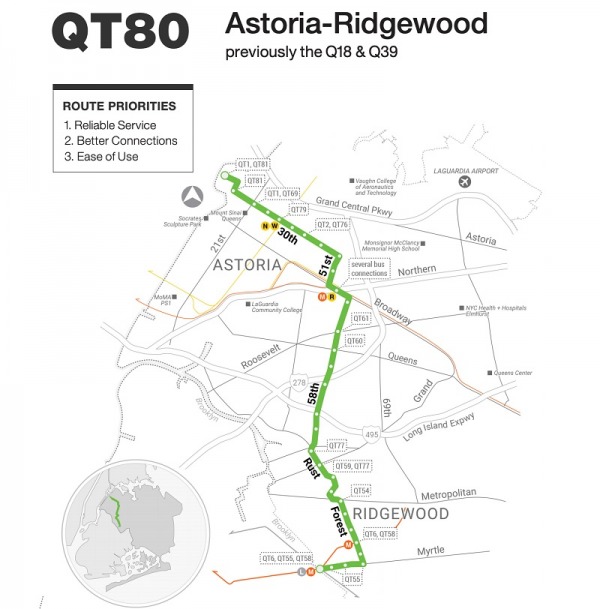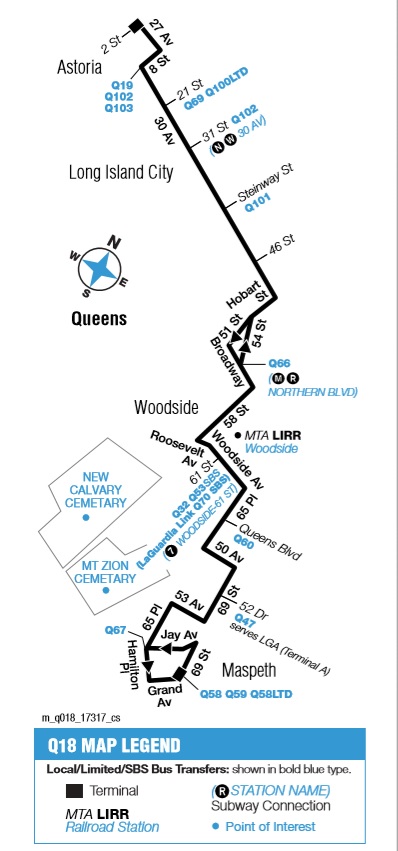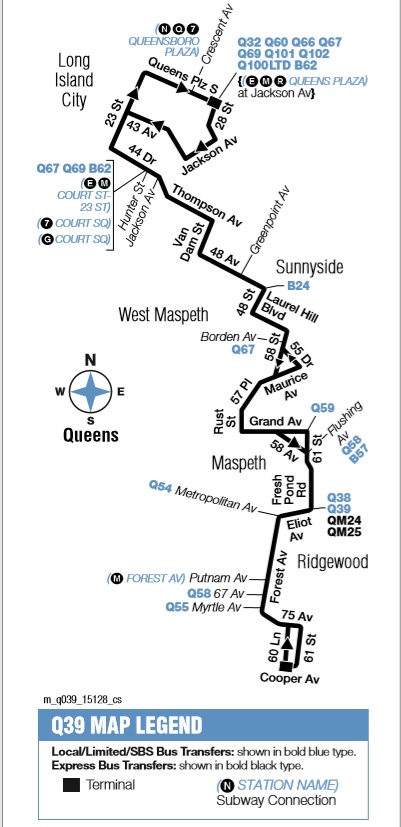
Photo: Stock Unsplash
Feb. 4, 2020 By Kristen Torres
State Sen. Michael Gianaris penned a letter to the head of the MTA on Jan. 31 concerning its draft plan to redraw the Queens bus network, joining a growing list of lawmakers who have voiced their opposition to various parts of the proposal.
In a letter addressed to MTA Chairman Patrick Foye, Gianaris pointed out three main flaws with the plan: fewer bus stops along each route; complex routes that would force riders to have to transfer buses; as well as reduced service to cultural institutions in Astoria and Long Island City.
The MTA is currently re-working all existing bus routes throughout the borough as part of the Queens Bus Network Redesign, which was first released on Dec. 31. The plan modifies some routes and replaces others with entirely new lines. A final version of the proposal is set to be released this spring.
“By rerouting or eliminating bus lines, the proposed plan could negatively impact residents who rely on buses to go to work and school, visit friends and family…or receive medical care,” Gianaris said in the letter.
Gianaris specifically pointed to the Q18 and Q39 bus lines, which under the new plan are combined into one central route—the QT80.

The Q18 and Q39 currently connect Astoria and Long Island City to Ridgewood, and although the new QT80 line would still run between Astoria and Ridgewood, the new line would make it tougher for Long Island City residents.

The new plan would force residents traveling between Ridgewood and Long Island City to make unnecessary transfers that are not required under the current network.
Since the new plan eliminates the Q18 and Q39 routes—combining them into the QT80 which ends on 27th Ave. in Astoria—riders would have to make a new transfer to reach Long Island City.
“For example, current Ridgewood-to-Long Island City riders on the Q39 will now need to transfer from the proposed QT80 to the QT60 near a highway,” Gianaris noted.
Gianaris also criticized the design for including greater distances between stops for all routes throughout the borough, which includes the proposed QT80.
“This especially hurts those who rely on bus transit as a necessity and who would be adversely affected by by additional walking and exposure to inclement weather including rain, wind, snow and cold such as seniors and parents with small or sick children,” Gianaris said.
The state senator also pointed to the elimination of the Q103 under the draft proposal, which he said would reduce access to cultural institutions such as the Noguchi Museum and Socrates Sculpture Park. The Q103 currently runs on Vernon Blvd.—the new plan largely removes service from that route.
“This was service I worked on with the MTA several years ago to increase in order to help more people visit these institutions,” Gianaris wrote. “Currently riders could access these locations via this increased service on Vernon Boulevard, but would now have to access via a route almost three quarters of a mile away on 21st Street that might be a serious challenge for some.”

Gianaris said he hopes MTA officials will re-work the proposal to include “faster, more accessible, more reliable” service.
MTA officials have said the new plan for the Queens bus network would aim to eliminate redundant bus stops—which currently exist nearly every three blocks on most bus lines in Queens.
The MTA will be hosting community workshops concerning the new bus plan in various communities through March. A full list of upcoming community meetings can be found here.
2 Comments

No one wants to go to Astoria from ridgewood. Workers and students are taking q39 to lic.
With the departure of NYC Transit President Andy Byford, who knows if this proposal will end up losing momentum under his successor and eventually dies over time. Consider past history. Nobody knows how much merging the city-subsidized MTA Bus Company with the New York City Transit Bus and the Manhattan and Bronx Surface Transit Operating Authority, under Governor Cuomo’s proposed MTA reorganization plan could potentially cost NYC. Take a trip back in time to understand why this three way merger might not work. Many who complain about ongoing problems with bus service including speed and frequency of service miss potential operational savings and service improvements by consolidation of duplicative routes between NYC Transit Bus 4,500 and MTA Bus 1,300 fleets which never took place. (MTA Bus created in 2005 is made up of the old NYC DOT private operator franchised municipal subsidized Liberty Lines Bronx Express, New York Bus Service, Green Bus Lines, Jamaica Buses, Triboro Coach Corporation and Command Bus companies). The same was true for reducing deadheading costs by reassigning bus routes between MTA Bus, Manattan and Bronx Surface Transit Operating Authority and NYC Transit Bus to closer garages for reduction of operating costs. Work rules and contracts between different labor unions representing employees at NYC Transit Bus, MABSTOA and MTA Bus continue preventing any changes to the status quo. NYC’s annual financial subsidy obligation to MTA Bus has increased dramatically over time rising from $199 million in Fiscal Year 2006 to $462 million in Fiscal Year 2017. It continues to grow year after year with no significant changes to the status quo. Don’t be surprised if this radical route restructuring proposal ends up significantly reduced in scope, if actually even implemented due to internal MTA institutional obstacles.
(Larry Penner — transportation historian, writer and advocate who previously worked 31 years for the United States Department of Transportation Federal Transit Administration Region 2 New York Office. This included the development, review, approval and oversight for billions in capital projects and programs for the MTA, NYC Transit, Long Island Rail Road, Metro North Rail Road, MTA Bus, NYC Department of Transportation along with 30 other transit agencies in NY & NJ).
.